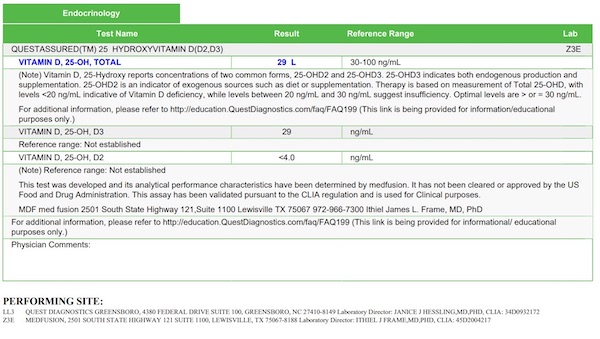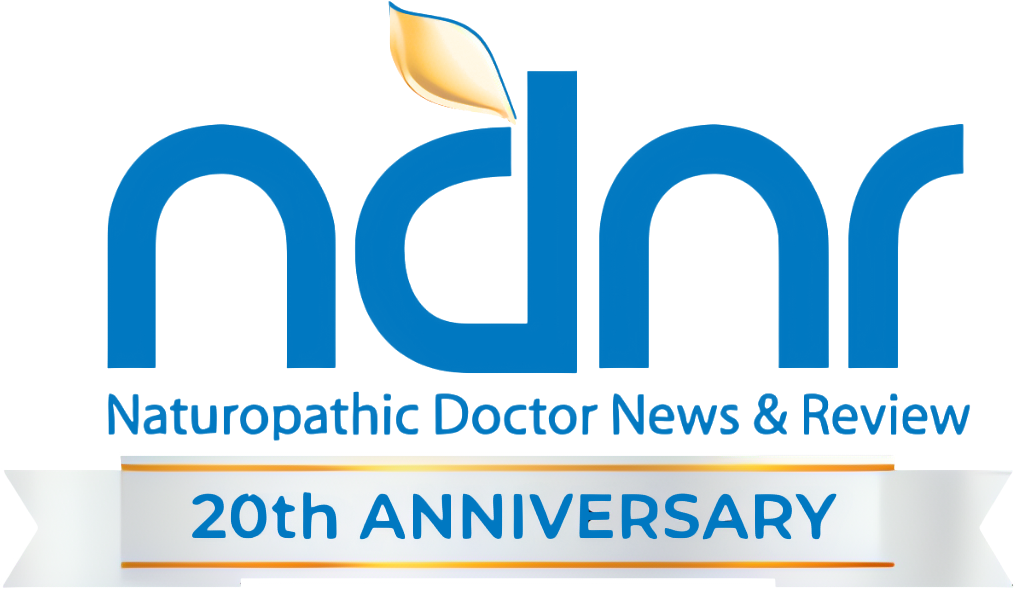A Case of Impaired Focus and Executive Dysfunction in a 35-Year-Old Male
By Matthew Strickland, ND
Attention Deficit Hyperactivity Disorder (ADHD) is a neurobehavioral disorder with a typical onset in childhood that can persist into adulthood. It is more commonly diagnosed in men, with a ratio of two to three cases per one female case diagnosed. It manifests through a combination of symptoms including inattention, hyperactivity, and impulsivity, and can have a significant impact on quality of life. Conventional treatments include stimulant medications like methylphenidate (Ritalin). Integrative treatments include the elimination of excitotoxins like food dyes, cognitive behavioral therapy, and nutritional supplements including L-theanine, Ginkgo biloba, essential fatty acids (omega-3s), and probiotics. In this case, I’m going to discuss significant improvement in a case of ADHD from Green Tea and L-theanine, and the latest research that supports this combination.
Presentation
JS, a 35-year-old male, presented to my office with a chief complaint of ADHD. He had never been officially diagnosed, but his trouble focusing was severe enough that it led him to seek care. The symptoms were worse over the last year since quitting drinking after a long-term alcohol use disorder. In adolescence, he describes “struggling a lot” with academics, and college was “a failure.” He had trouble focusing on work and would find things that he was more into pursuing. He describes sometimes feeling like his brain was broken and that he has trouble slowing down. His relationships and work were impacted by his impulsivity. He forgot to do things and was generally disorganized. He described that the general pull of his attention was toward something that felt good and that he was more interested in.
Additionally, he complained of episodes of low energy after feeling overwhelmed, joint pain, and topical fungal issues including tinea cruris, onychomycosis, and other areas of dermal tinea.
He had not had coffee in six years and drank several different decaffeinated herbal teas. He has been vegan for the last eight years. He had difficulty establishing an exercise routine because of the joint pain.
His family history was significant for type 2 diabetes (father, paternal grandmother, and grandfather). He had been taking a multivitamin for the past seven years and a Holy Basil tincture on and off for the last five years. He was on no medications. He meditates for 20 minutes daily and sees a therapist weekly.
Plan
He hadn’t had screening labs in decades. A comprehensive screening panel was ordered that included a lipid panel, comprehensive metabolic panel, hemoglobin A1c, thyroid stimulating hormone, complete blood count, ferritin, and Vitamin D.
Other recommendations included: 2 tablespoons of flax oil daily with breakfast. At least 1 cup of green tea per day, stopping any tea after 4 pm as it could affect sleep, 200mg of L-theanine with lunch, castor oil applied topically to affected joints, 3-5 drops of Tea Tree Oil and/or Oregano Oil added to bath water when taking a bath, and 3 days of diet diary filled out and uploaded to the patient portal before the next visit.
First Follow-Up (eight weeks later)
At his first follow up JS reported considerable improvement. He was feeling less overwhelmed, in the last month he felt “amazing, clear, and calm.” He was feeling productive at work and was able to get a lot done. He had been able to exercise more recently, doing at least 25 minutes of cardiovascular exercise three times per week. Since the last visit the tinea cruris has improved, one of the toenails impacted by the fungus fell off, and an underarm rash got better with switching deodorant. He wanted help with what he still feels like a systemic fungus issue. He was recommended a four-week course of an antifungal supplement containing: garlic, caprylic acid, oregano, selenium, and berberine. He was reminded to have his labs done.
Lab Results (eight weeks after the first follow-up)
No anemia or abnormal thyroid function, possible causes for ADHD symptoms, were found. LDL was slightly elevated, and Vitamin D was low at 29 (30-10). All other labs were within normal limits.

Recommendations based on labs
Take 10,000 IU of Vitamin D daily with food for three weeks as a loading dose, followed by 5,000 IU daily. Follow up in six to eight weeks.
Second Follow-up (three weeks after labs)
JS reported his focus has consistently improved since his first visit and is no longer an issue. He is drinking a cup of green tea in the morning and then taking 200mg of Theanine at noon. He rates his energy at eight or nine out of 10. He has developed some ankle pain from the exercise and notes a history of plantar fasciitis. He is unsure if there has been much change in the skin rash with the antifungal supplement.
Discussion
This patient responded remarkably well to the interventions for his chief complaint, ADHD, especially considering the length that his symptoms were present (since childhood) compared to the time he was doing the interventions (two months to first follow-up).
The efficacy of polyunsaturated fatty acids (PUFAs), also known as omega 3’s, in ADHD is still being debated. A recent Cochrane review of the research was equivocal.1 In this case, the flax oil, a rich source of PUFAs, along with the topical Castor Oil, was recommended for the joint pain. The goal was that by reducing the joint pain this patient would be able to exercise more. Exercise has been shown to reduce stress and anxiety, improve negative affect, and improve executive function (EF) and memory. EF is altered in patients with ADHD.2 By his first follow-up JS was exercising at least three days per week.
The green tea and L-theanine were given specifically to help with focus and other cognitive symptoms.
Camellia sinensis is the Latin name for the plant that is commonly recognized as tea. Many tea types come from Camellia sinensis, including white, green, oolong, black, and pu-erh tea. The difference in each type is the post-harvest processing.3
Testing has shown that green tea has the lowest caffeine-to-l-theanine ratio of all the tea types.4
L-theanine is a water-soluble amino acid found as a metabolite of the Camellia sinensis plant in the amount of around 1-2% of the dried leaves. As a comparison, caffeine is around 3-6% by weight of the dried leaves. For two grams of dried tea per cup that gives approximately 20-40mg of L-Theanine and 60 to 120mg of caffeine.4
L-theanine is neuroprotective, antioxidant, and anti-inflammatory, on top of other beneficial effects.5 In this case L-theanine was given because of its beneficial effects on attention.
- A 2008 randomized control trial showed that L-theanine increased alpha band activity on the EEGs of study participants. Alpha band activity is associated with focused attention.6
- A 2016 study showed that 200mg of L-theanine outperformed 160mg of caffeine on a measure of attention in 20 healthy male volunteers, but given together the benefit was better by a large margin.7
- A 2021 study out of Japan showed that 100mg of L-theanine taken as a single dose improved cognition in multiple ways – the L-theanine improves reaction times, and correct responses in a working memory test. 8
- Also published in 2021, a systematic review of the literature on the cognitive enhancing effects of green tea and caffeine found five controlled trials or observational studies including the previously mentioned 2016 study. The combination of green tea and caffeine showed improvements in attention, cognition, and inhibitory control.9
The half-life of caffeine and theanine varies by individual, but theanine is generally metabolized around five times quicker than caffeine.10,11 Taken together suggests an explanation for the benefits JS derived from the treatment plan. As the morning cup of tea was metabolized, the theanine was broken down before the caffeine, mainly eliminated by lunchtime. When the lunchtime dose of theanine was taken there was still caffeine in his system, likely around half of what was ingested with the cup of tea.10 The lunchtime dose of L-theanine increased blood levels, carrying the synergistic effect of the caffeine/L-theanine through the evening hours when both were metabolized to subtherapeutic levels.
Conclusion
Recent research confirms that when giving L-theanine for attention and focus, it’s beneficial to give caffeine at the same time or have another source for caffeine in the diet like green tea. Given together, their benefits are additive.9 Furthermore the pharmacokinetics of L-theanine and caffeine suggest a lunchtime dose of L-theanine after a morning cup of tea will help sustain the beneficial effects that these two molecules have when taken in combination. Caffeine and L-theanine, in combination, should be considered as first-line integrative therapies in the treatment of ADHD.

Matthew Strickland, ND, is a leader in integrative, functional, and naturopathic medicine. He treats patients at a distance, as well as in-person at his clinic, Southeastern Integrative Health and Wellness, in Durham, NC. Dr Strickland is currently serving as Vice President of the North Carolina Association of Naturopathic Medicine.
References
1.Gillies D, Leach MJ, Guillermo Perez Algorta. Polyunsaturated fatty acids (PUFA) for attention deficit hyperactivity disorder (ADHD) in children and adolescents. Cochrane Library. 2023;2023(4). doi:https://doi.org/10.1002/14651858.cd007986.pub3
2. Christiansen L, Beck MM, Bilenberg N, Wienecke J, Astrup A, Lundbye-Jensen J. Effects of Exercise on Cognitive Performance in Children and Adolescents with ADHD: Potential Mechanisms and Evidence-based Recommendations. Journal of Clinical Medicine. 2019;8(6):841. doi:https://doi.org/10.3390/jcm8060841
3. Koch W, Zagórska J, Marzec Z, Kukula-Koch W. Applications of Tea (Camellia sinensis) and its Active Constituents in Cosmetics. Molecules. 2019;24(23):4277. doi:https://doi.org/10.3390/molecules24234277
4. Csupor D, Boros K, Jedlinszki N. Theanine and Caffeine content of infusions prepared from commercial tea samples. Pharmacognosy Magazine. 2016;12(45):75. doi:https://doi.org/10.4103/0973-1296.176061
5. Li MY, Liu HY, Wu DT, et al. L-Theanine: A Unique Functional Amino Acid in Tea (Camellia sinensis L.) With Multiple Health Benefits and Food Applications. Frontiers in Nutrition. 2022;9. doi:https://doi.org/10.3389/fnut.2022.853846
6. Nobre AC, Rao A, Owen GN. L-theanine, a natural constituent in tea, and its effect on mental state. Asia Pacific Journal of Clinical Nutrition. 2008;17 Suppl 1(1):167-168. https://pubmed.ncbi.nlm.nih.gov/18296328/
7. Kahathuduwa CN, Dassanayake TL, Amarakoon AMT, Weerasinghe VS. Acute effects of theanine, caffeine and theanine–caffeine combination on attention. Nutritional Neuroscience. 2016;20(6):369-377. doi:https://doi.org/10.1080/1028415x.2016.1144845
8. Baba Y, Inagaki S, Nakagawa S, Kaneko T, Kobayashi M, Takihara T. Effects of l-Theanine on Cognitive Function in Middle-Aged and Older Subjects: A Randomized Placebo-Controlled Study. Journal of Medicinal Food. 2021;24(4):333-341. doi:https://doi.org/10.1089/jmf.2020.4803
9. Anas Sohail A, Ortiz F, Varghese T, et al. The Cognitive-Enhancing Outcomes of Caffeine and L-theanine: A Systematic Review. Cureus. 2021;13(12). doi:https://doi.org/10.7759/cureus.20828
10. Institute of Medicine (US) Committee on Military Nutrition Research. Pharmacology of Caffeine. National Library of Medicine. Published 2001. https://www.ncbi.nlm.nih.gov/books/NBK223808/
11. Scheid L, Ellinger S, Alteheld B, et al. Kinetics of L-Theanine Uptake and Metabolism in Healthy Participants Are Comparable after Ingestion of L-Theanine via Capsules and Green Tea. The Journal of Nutrition. 2012;142(12):2091-2096. doi:https://doi.org/10.3945/jn.112.166371

